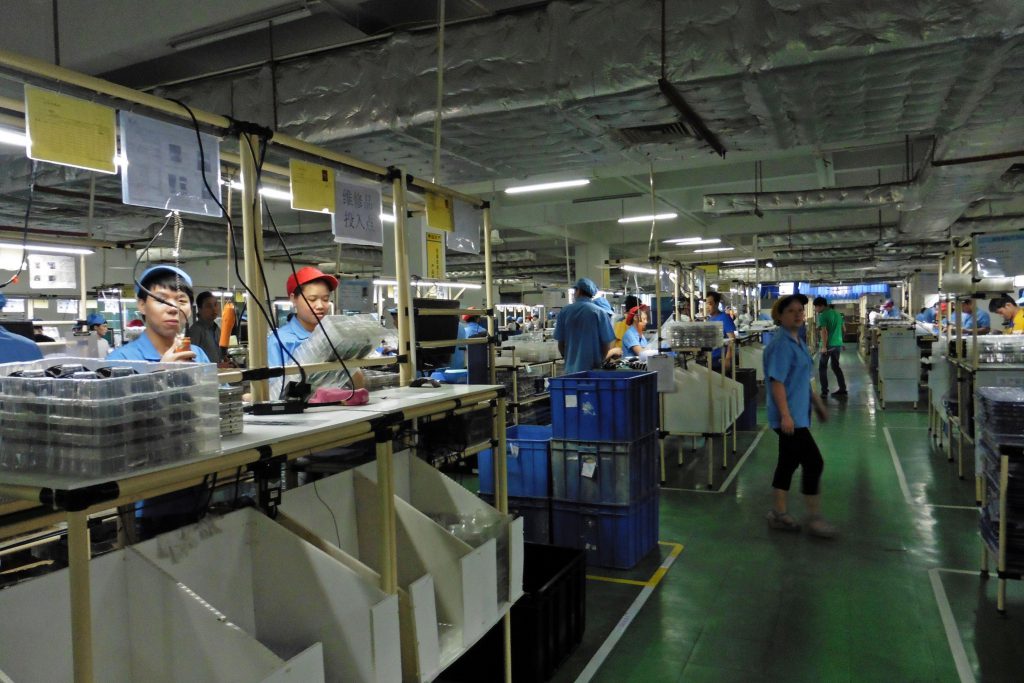
Around three-fourths of the jobs lost were in manufacturing.
We already know that millions of American manufacturing workers lost their jobs after China entered the World Trade Organization in 2001. Now, a new report from the Economic Policy Institute (EPI) is taking a deeper dive into that job loss — looking at the industries, states, and even congressional districts most impacted by this job loss.
Around 3.4 million jobs total were lost between 2001 and 2015 due to the U.S.-China trade deficit, according to the report, and 2.6 million of these jobs were in the manufacturing sector.
Along with lost jobs, the trade deficit (which hit $367.2 billion in 2015) reduced wages for American workers without a college degree. Workers directly impacted by the Chinese trade deficit lost $37 billion per year, while all non-college gradulates saw their wages reduced by $180 billion per year. Most of that income, according to EPI, was redistributed to coporations and workers in the top income brackets.
For those of us who follow China trade regularly, much of this probably doesn't come as a surprise. What is interesting is where a lot of these job losses happened.
The trade deficit in the computer and electronic parts industry grew the most from 2001 to 2015, costing 1.24 million jobs, about 36 percent of the total jobs displaced. Global trade in advanced technology products is dominated by China; in 2015, the U.S. had a $120.7 billion deficit in advance technology products with China. Other hard-hit industries included apparel, which lost 204,900 jobs; fabricated metals, which saw 161,800 jobs displaced, and furniture, which lost 115,900 jobs.
And while you might think traditional manufacturing states were most impacted by the trade deficit, many of the states and congressional districts effected were outside the industrial heartland — think California, Texas, Oregon, Massachusetts, Minnesota, and Arizona. The graphs embedded below offer a deeper dive into where job losses happened.
There is now, of course, a heated debate happening over the best steps to take to reduce the trade deficit, strengthen American manufacturing, and create jobs.
In a call with reporters on Tuesday, report author Rob Scott noted that stopping unfair trade practices by China is key, including the dumping of products like steel and aluminum into the U.S. market. Chinese subsidies also have contributed to the problem, Scott added.
That was a point echoed by Leo Gerard, president of the United Steelworkers, who said that China is purposely subsidizing its commodities sector in order to keep millions of its citizens employed. In essence, China is exporting its unemployment to the United States, Gerard said. "They’re not doing it to make a profit, they’re doing it to keep people employed," he said.
Alliance for American Manufacturing President Scott Paul told reporters that smart policy is critical to fixing our lopsided relationship with China. Domestically, long-term infrastructure investment, skills training programs, a revised tax code, and policies that encourage innovation will be key to creating the next generation of manufacturing jobs. But addressing the trade imbalances between the U.S. and China is also vital.
"It was not the invisible hand that created this challenge. These were specifically policy choices in Beijing and in Washington that led to where we are today," Paul said. "Each government can and should use policy levers to help rebalance the relationship."
Paul noted that while there has been significant talk about a potential trade war between the United States and China, it isn't in anyone's interest to create a massive disruption. It's about shifting the incentives to "more accurately reflect the marketplace."
"I think that there's a lot to do that's perfectly within our rights as a WTO member and within our domestic laws that ensure a level playing field," Paul said. "And I think we need to utilize these tools."
Learn more about the new report, Growth in U.S.-China Trade Deficit Between 2001 and 2015 Cost 3.4 Million Jobs.
